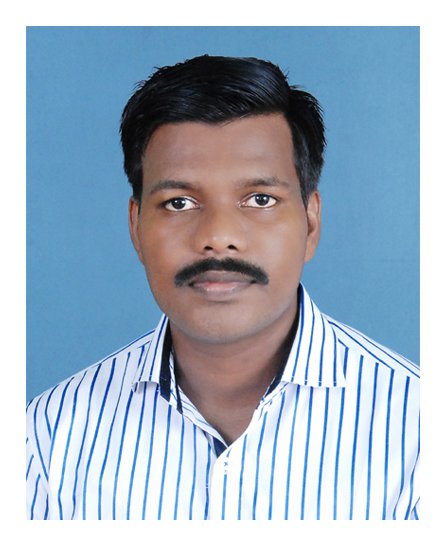JOHN PRAKASH
@cutn.ac.in
Assistant Professor
Central University of Tamil Nadu
RESEARCH, TEACHING, or OTHER INTERESTS
Analytical Chemistry, Spectroscopy, Physical and Theoretical Chemistry, Multidisciplinary
Scopus Publications
Scholar Citations
Scholar h-index
Scholar i10-index
Scopus Publications
Jhili Mishra, Anupama Vijayan, Jitendriya Swain, and John Prakash
Elsevier BV
Anupama Vijayan and John Prakash
Elsevier BV
Anupama Vijayan and John Prakash
Informa UK Limited
Anupama Vijayan and John Prakash
Elsevier BV
Anandhu Mohan and John Prakash
Elsevier BV
John Prakash and Ashok Kumar Mishra
Springer Science and Business Media LLC
AbstractQualitative and quantitative display of multiple fluorescent analytes is made simple and reliable in this micelle assisted methodology. The adopted method involves micelle assisted evincing of ppb level of PAHs in water; measurement of total fluorescence (white light excitation fluorescence, WLEF) and data deciphering using multivariate analysis. This protocol yields sensitive and accurate quantification of the cancerous pollutants (PAHs) in aqueous media with Limit of Quantification of the order 1–10 μg/L and accuracy of >98%. The use of WLEF enables the simultaneous acquisition of fluorescence signatures of all the PAHs. It has the additional advantage of being portable, layman-friendly and cost-effective. The optimized amount of surfactants for the simultaneous extraction of PAHs from real samples was estimated as 27.8 mg (19.3 mM) of SDS and 9.1 mg (5 mM) of CTAB. Also, the analytical fidelity of the quantification such as percentage recovery (98 ± 2%), linear dynamic range (2–250 μg/L), RMSEP (<0.5), etc. explains the veracity of methodology.
John Prakash and Ashok Kumar Mishra
AIP Publishing
It is possible to measure luminescence quantum yield in a facile way, by designing an optical spectrometer capable of obtaining electronic absorption as well as luminescence spectra, with a setup that uses the same light source and detector for both the spectral measurements. Employment of a single light source and single detector enables use of the same correction factor profile for spectral corrections. A suitable instrumental scaling factor is used for adjusting spectral losses.
John Prakash and Ashok Kumar Mishra
Wiley
AbstractA fiber optic spectrometer setup was designed for white light excitation fluorescence ‘WLEF’ based measurements. Using this setup, two different analytical methods, a self referencing ratio‐metric and a difference WLEF methods, were developed for the quantification of doxorubicin (DXR) in biofluids. It was seen that Acetonitrile (ACN) acts as an efficient and transparent extracting medium for DXR. The figures of merit and the percent recoveries of DXR in blood serum, even in presence of external fluorophores and in urine samples are comparable with existing analytical methods. The compact spectrometer is expected to be useful for easy quantification of fluorescent pharmaceuticals in biofluids. (© 2014 WILEY‐VCH Verlag GmbH & Co. KGaA, Weinheim)
John Prakash and A K Mishra
IOP Publishing
A dip-probe adapter was designed for easy analysis of complex multifluorophoric systems. The newly fabricated fiber optic compatible spectrometer design with dip-probe adapter could reach and analyze fluorophores kept at a distance from the analyzer. The new design and its parameters were optimized using standard fluorophores to get an optimal spectral response. This white-light excitation fluorescence (WLEF) based spectrometer could analyze any fluorophoric system rapidly without changing the instrument configuration. Fuel–oil blends such as petrol–2T oil and petrol–4T oil were precisely quantified with high accuracy (0.3% error) using a WLEF–multivariate analysis combination.
John Prakash and Ashok K. Mishra
Elsevier BV
John Prakash and Ashok Kumar Mishra
Royal Society of Chemistry (RSC)
The scope of white light excitation fluorescence in analyzing multifluorophoric systems has been explored. White light excitation fluorescence (WLEF) spectra retain the resultant fluorescence signature of all the fluorophores and their interactions although, in contrast to excitation-emission-matrix fluorescence (EEMF) spectra, resolution along the excitation axis is lost. The demonstration of the advantages of WLEF with regard to fiber optic compatibility, sensitivity, selectivity and simultaneous detection of multiple fluorophores suggests that WLEF based analytical techniques can be methods of choice in certain cases, especially with regard to low cost in situ analysis of an analyte. The analysis of multifluorophoric systems by WLEF using a fiber optic fluorimeter clearly shows the effectiveness of WLEF (i) in two-fluorophoric systems at low fluorophore concentrations in which the spectral additivity is retained and (ii) in a complex multifluorophoric system like diesel-kerosene mixtures.
John Prakash and Ashok Kumar Mishra
Royal Society of Chemistry (RSC)
The hitherto unexplored scope of white light excitation fluorescence (WLEF) in analytical fluorimetry has been examined. In WLEF, the entire UV-Visible spectrum is used as the excitation source instead of selecting a particular wavelength/band pass excitation (BPE) source as is commonly done in conventional fluorescence spectroscopic methods. It is found that WLEF gives good spectral integrity, analytical sensitivity, intensity enhancement in the analysis of transparent fluorescence solutions and in the highly scattering medium with the use of difference spectrum. WLEF is shown to be a two-dimensional representation of the three-dimensional excitation-emission-matrix fluorescence (EEMF) spectrum. One of the major advantages of WLEF is that there is no need to know the excitation wavelength of an analyte, and the technique is cost saving as there is no need for band pass/cut off filters and/or a monochromator.

